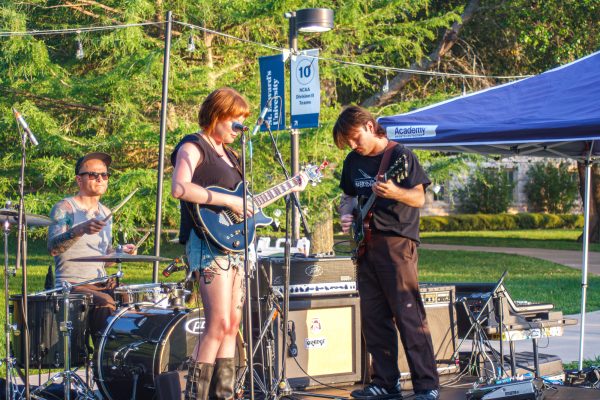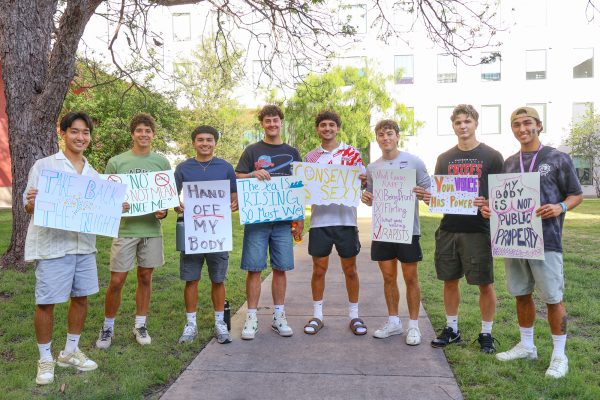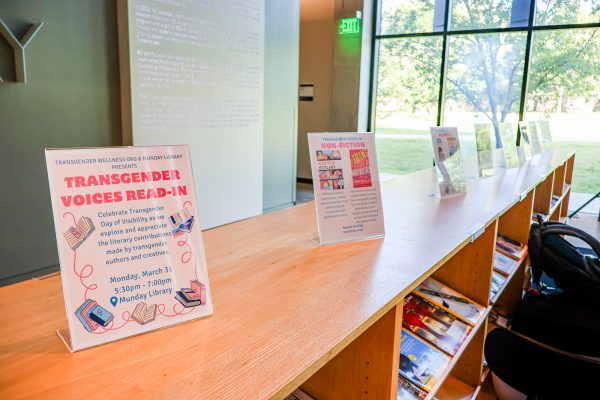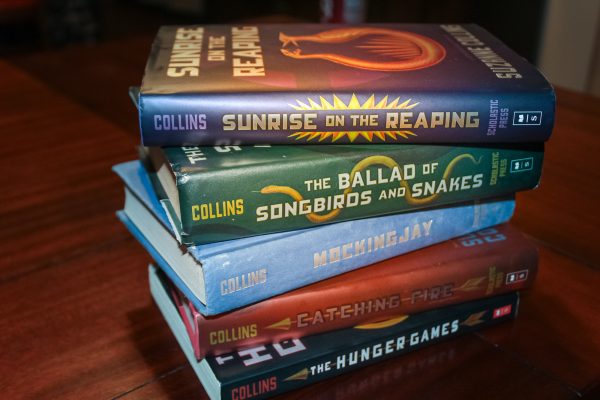Ionesco’s absurdist tactics prevail in ‘Rhinoceros’ relevance, themes
It’s 2017 and it’d be really nice if fascism weren’t relevant anymore. However, the recent upsurge of Nazis and white nationalists in Charlottesville have shown that that simply isn’t the case; and Mary Moody Northen Theater has risen to the challenge by addressing it with their latest play, “Rhinoceros.”
The 1959 play by Eugene Ionesco, known equally for its absurdism as it fascist undertones, depicts a quaint French town where residents are suddenly, and for an unknown yet unquestioned reason, turning into rhinoceros.
In the director’s note, David Long addresses this unique atmosphere of nationalist rhetoric, fascist undertones and fake news currently in this country that allows us to “examine ‘Rhinoceros’ through a modern lens.”
Although it isn’t just the era of alternative facts or even the events in Charlottesville that make this play relevant; Ionesco’s unique brand of absurdism and his choice to break the fourth wall make this play seriously relevant and applicable to any time period and any ideological threats.
Ionesco explores absurdism, a form of theatre in which the impractical or impossible is universally accepted without question, through his transformation of human characters into rhinoceroses. Rather than give this threat a name, he gave it a symbol through which the audience could and should be constantly interpreting it to their own time’s threats.
There is one scene where the main character, an apathetic drunkard known as Berenger, looks out his apartment window to see scores of rhinoceroses, knowing among them are his now indifferentiable friends and colleagues.
The rhinoceros transformed in my mind at this moment. First, I saw what Ionesco saw when he wrote this play: hordes of neighbors turned Nazis, right arms outstretched in reverence to Hitler, swastikas emblazoned on their arms. Then I saw the rhinoceroses in America’s history; the Ku Klux Klan, white hoods with slits cut out for indifferentiable eyes.
Finally, out of the rhinoceroses, I saw Charlottesville, the largest gathering of white supremacists in over a decade, the white shirts and khaki pants with emblazoned tiki torches, and the chants of “blood and soil” ringing from the throats of people you live amongst.
The terrifying aspect of the rhinoceroses is how absurd they are. What could make Ionesco choose a random animal to make the staple of his play perfectly parallels the destructive ends of ideologies such as fascism or white supremacy.
And the absurdity of acceptance draws a stark parallel to how we as neighbors and friends and family can take an apathetic stance when we see individual problems in our community, and the large consequences of not speaking up.
An additional technique that Ionesco utilized to add to the timelessness of this play is breaking the fourth wall. In the first half of the play, there are elements of artificiality such as the synced repetition of “Christ, a rhinoceros!” or the chorus following around the logician, which break the spell of reality that playwrights so often attempt to preserve. Ionesco goes as far to have Berenger and his friend, Jean, point out that they are currently in a play as they speak.
While humorous, this technique ingeniously keeps up a dialogue between the audience and the deceased playwright, in a way that toys with the audience by saying, “Look, we both know you’re watching a show, but pay attention.”
Rhinoceros’s exploration of ideological paradoxes makes itself constantly relevant. Today, in the wake of neo nazis and white supremacists, we struggle to validate freedom of speech yet without the toleration of hate speech. Today, in the wake of a rift in what media we can trust for the truth, we struggle to understand our own logic for verifying facts. Today, “Rhinoceros” is as relevant as 1959.

I am Lilli Hime—English Writing and Rhetoric major and freelance writer at Hilltop Views. This is my senior year at St. Edward's University.
My role...






